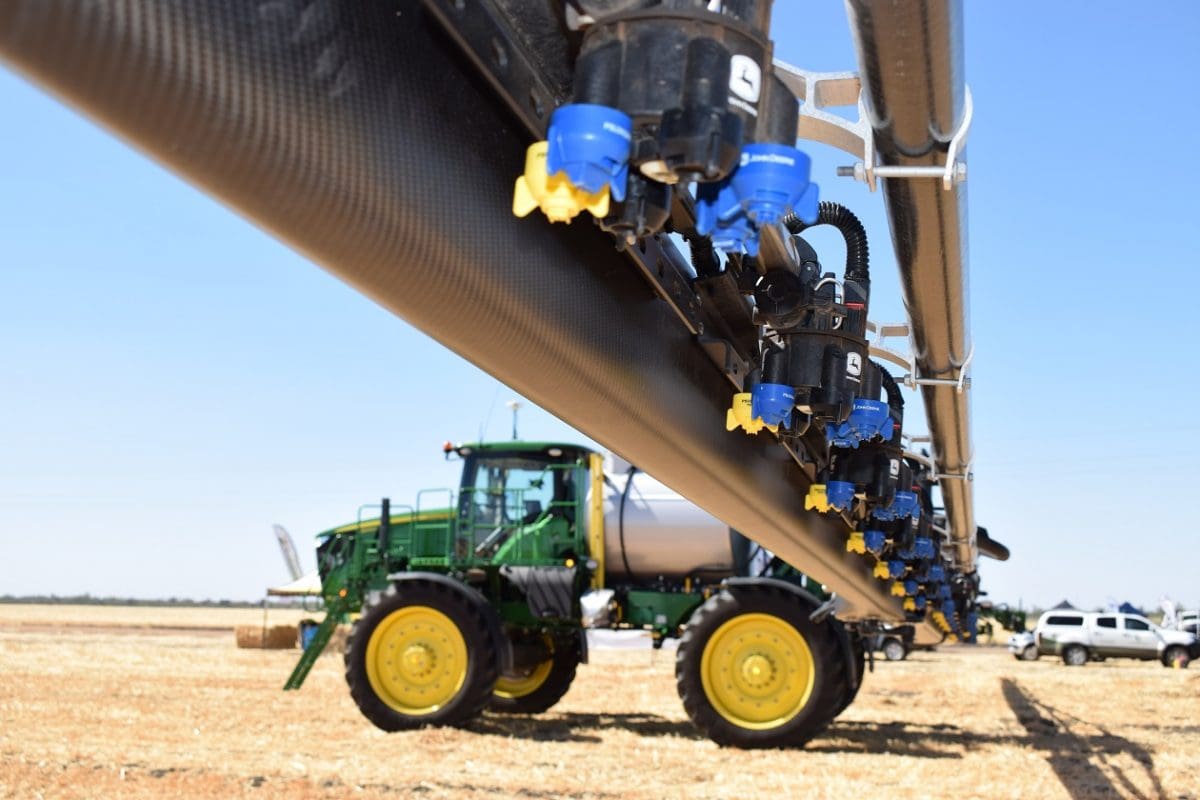
AGRICULTURAL chemical production is facing increasing public scrutiny and heightened regulation that are stifling the production of new and innovative herbicides and pesticides, according to Alltech Crop Science global compliance manager, David Brady.
In a presentation to the Alltech One Virtual Experience conference, Mr Brady posed the question: “Could the era of the chemist as the driving force behind agricultural production be coming to an end?”.
Mr Brady said the challenges facing the industry were accelerating and reshaping the products available to farmers.
He called on authorities to review the process and develop policy and regulation that supported innovation, and regulatory frameworks that were innovation-friendly.
“We need regulation to be risk-based and to follow sound science, with a review of the precautionary principle and its relationship to assessing risk’” he said.
Challenges facing industry
In the following excerpts from his presentation, ‘Playing by the Rules– How Global Regulation is Impacting Agronomic Trends’, Mr Brady said:
The future of the agrochemical industry should be bright, considering where the world is heading. There will be 11 billion people on our planet in the next 100 years. This growth in population means we will need more crops and, therefore, more protection products against crop losses to increase yields.

David Brady
Consumers demand agricultural products without blemishes or any imperfections, which can often only be produced by using agronomic protection products. These products also have a role in tackling climate change through reducing the need to convert forest to farmland, thereby reducing potential greenhouse gas emissions and losses of biodiversity.
However, there are several challenges that could stifle the availability of agrochemical protection products in the future. These challenges are accelerating and reshaping the products available to farmers, who are already subject to dwindling incomes.
Have the regulations become stricter or more unpredictable?
In Europe, there’s been a move to regulate products based on hazard and not risk.
Risk-based approaches are still followed in the United States and most other countries and require that the protected environmental exposure concentrations are below a concentration considered safe for humans and the environment. But evaluating and communicating any environmental or food-based risk bears obstacles for policymakers.
Debates over the reform of pesticide regulation often frame the policy disputes far too simply. Influencing risk evaluations are newer levels of scrutiny coming from the public and NGOs. NGOs are often not happy with the outcomes of risk assessments by regulatory agencies, which, in the US, have led to lawsuits against the Environmental Protection Agency. This is leading to the courts becoming deeply involved in pesticide registration processes.
Lawsuits are expected to have a profound impact on the future registration of many important pesticides.
Public perception
The message delivered to the general public is often oversimplified, the message being that pesticides are, by definition, bad for human health, but also pesticides can easily be avoided with little or no impact on agriculture quality or quantity. Public perception of this industry is that research and researchers involved in it are not impartial.
As chemical use has become more restricted, most people in Europe feel that the risks to life and health have steadily grown over time, and that, in particular, environmental health risks caused by chemicals and pollutants have increased in volume and intensity.
Food additives and pesticide residues routinely top the list of fears and worries shared by the public.
Glyphosate under scrutiny
So, how has public scrutiny affected the authorization of protection products in Europe? Let’s look at the example of glyphosate renewal.
In 2002, glyphosate was included in Annex I of the Plant Protection Directive 91/414/EEC. In 2015, the International Agency for Research on Cancer, IARC, classified glyphosate as probably carcinogenic to humans. This is the same classification the IARC gave to red meat.
After reviewing the available information and the IARC conclusions, the European agencies EFSA and ECHA concluded that classification as carcinogenic was not warranted. Whereas IARC based its conclusions on published literature, EFSA and ECHA additionally used unpublished studies submitted by industry.
Several other competent authorities around the world, including those of the US, Canada, New Zealand, Australia, and Japan, have subsequently finalized a new assessment of glyphosate and concluded that the herbicide is not carcinogenic. Meanwhile, over one million EU citizens called for the commission to ban glyphosate, based off of NGO campaigning.
Fewer new products
We’re losing older chemistries, but regulation is also stifling, rather than promoting, innovation of agrochemicals.
Developing new chemical products has never been cheap or easy. On average, it takes 11 years of research and development to bring a single product to the market, at a cost of hundreds of millions of dollars.
So, what we end up seeing is less and less new active ingredients coming onto the market.
We still get new products, but based off old chemistries. These pressures are leading to development of alternatives to chemical pesticides, in particular the use of biopesticides. Despite their success and steadily growing use, they remain grossly underexploited.
In ag, if you were to push biopesticides into this model, it would be on or near the plateau of productivity. These technologies have been around decades but are becoming more relied on as more agrochemicals are forced off the market.
Follow the science
We need regulation to be risk-based and to follow sound science, with a review of the precautionary principle and its relationship to assessing risk.
Policymakers should be taking into account the need for investments to ensure long term resilience of the food chain. This could be achieved by inclusion of an innovation principle into the regulatory processes. The principle that has been proposed in Europe would mean that, in the future, when policymakers introduce new initiatives, it will take into account the effect on innovation. Policy and regulation should support innovation, and regulatory frameworks should be innovation-friendly.
Particular attention needs to be paid to the impact of regulatory decisions on the availability of single active substances and for crop protection technology to be assessed in a wider context of food production strategies. Safety factors in the evaluation of risks of crop protection technologies are much higher than the safety factors used in other risks in our daily lives. This needs to be communicated to the general public who, we know, are opposed to risk classifications by evaluators.

HAVE YOUR SAY